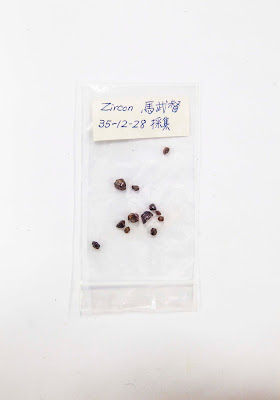統一度假村 Uni-Resort
攝影 photography,尺寸依場所而定 dimensions variable,2017Geologists discovered zircon in the Mawudu River (Hsinchu) riverbed during the Japanese occupation and further investigated whether this area was suitable for mining. Now, there is a uni-resort built in this exact area. This installation consists of a few ready-made images gathered from different sources, such as a large-scale plan of the resort grounds provided by the resort, an image of the resort facilities, a geological map (Tikuto sheet) of the area used by the Japanese geologists during the colonial period, an atom simulation, and a plate subduction sketch. An image simulation of a nuclear power plant is also included in the installation since zircon contains radioactive uranium and can be used for the purposes of nuclear research. In addition to these ready-made images, Hsu also presents a photograph of zircon under the microscope, as well as the zircon samples preserved by the Department of Geosciences at National Taiwan University in this installation. With these complex imageries, the artist intends to depict the vague impression of science and history pertaining to this period.
日治時期的地質學家在新竹關西地區的馬武督河床中,採集到了特殊的鋯石巨晶,並進一步研究此一地區是否有開採的價值。此地點正是今日的統一度假村。這組影像作品包含了數個不同來源的現成影像,例如統一度假村所提供的園區平面圖大圖輸出、渡假村設施的攝影、日治時期地質學家針對此地區所繪製的「竹東圖幅」、原子模擬圖、板塊隱沒示意圖。另外,由於鋯石含有放射性的鈾元素,也流傳著鋯石可作為核子研究用途的傳說,因此現場也包含一張核電廠的模擬圖。除了這些現成的影像素材外,藝術家也呈現了顯微鏡頭底下的鋯石攝影,以及台大地質系實驗室保存的日治時期鋯石標本。藉由這些紛雜的影像類型,描繪這段科學與歷史的模糊印象。




沒有留言:
發佈留言